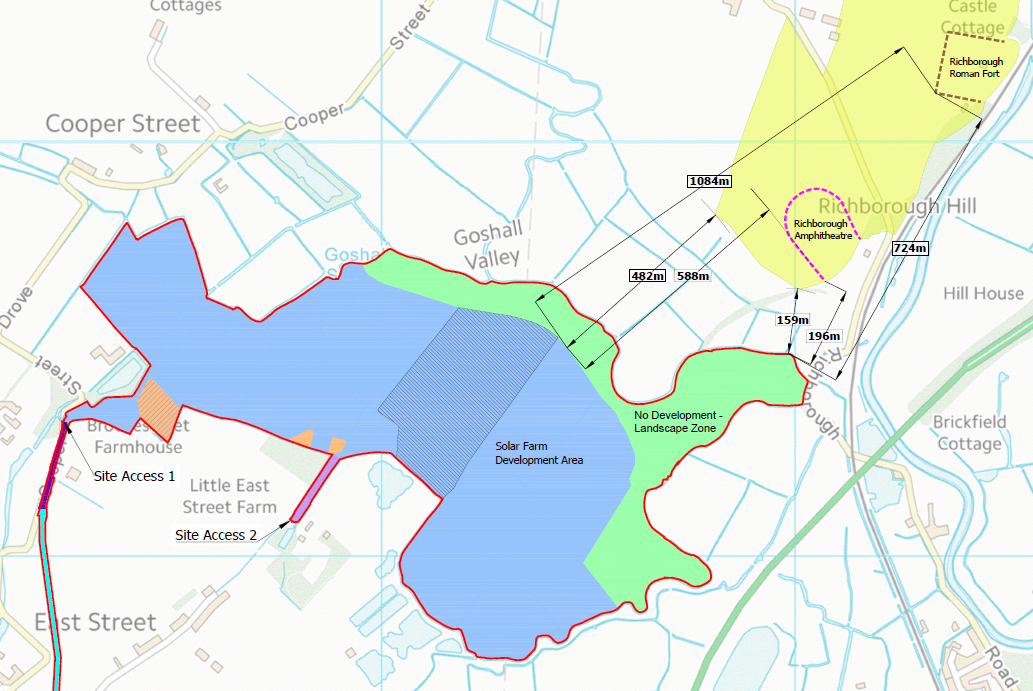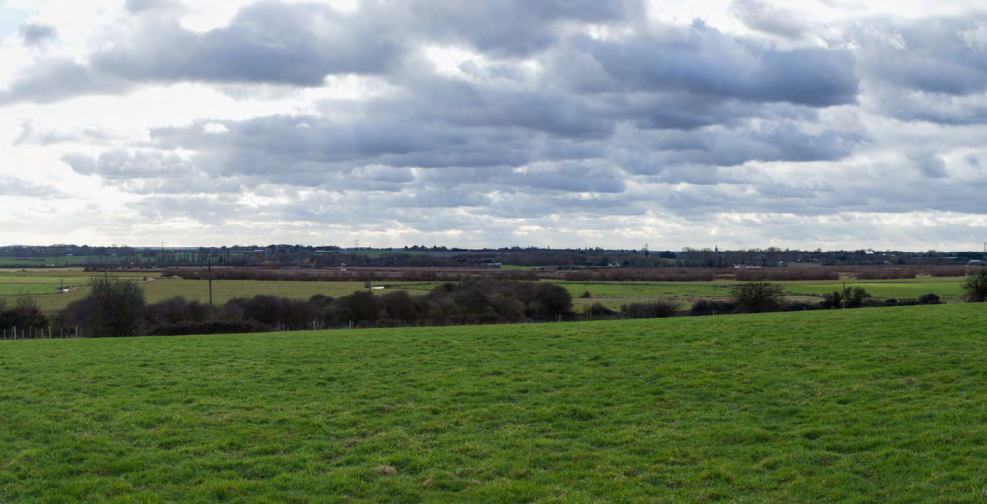
Plans submitted for new solar farm near Sandwich
Little South would generate enough clean, home-grown electricity to power the equivalent of almost 16,000 homes
Plans have recently been submitted to Dover District Council for a new solar farm north of Sandwich which, if consented, will generate enough clean, home-grown electricity to power the equivalent of almost 16,000 homes.
The proposal for Little South Solar Farm has been brought forward by Statkraft, a renewable energy company that has been operating in the UK since 2006.
We agree with the local community that Richborough Roman Fort and Amphitheatre should be protected. After feedback from the community and heritage groups, changes have been made to the plans. We’ve reduced the height of panels and increased their distance from the fort and amphitheatre.

The closest panels will be almost 600 metres away from the amphitheatre and over a kilometre away from the fort. Almost a third of the site will contain no solar panels at all. Statkraft are also including a 16-hectare nature conservation area, which will reduce visual impact, and restore the landscape to how it looked before it was farmed.
Wildflower grassland, wetland areas, and drainage ditches have also been added in a part of the site that has been earmarked by the council as having potential for biodiversity improvements. No part of the site is classed as high-quality agricultural farmland or Best and Most Versatile (BMV) land, which is rare in the local area. Large areas of the site are non-agricultural land, made up of watercourses and ditches.
Heritage experts have also found no evidence or archaeological record of Roman activity on the site. However, further studies will take place, and mitigation measures put in place to conserve any significant findings.

Statkraft wants to ensure that the local community benefits directly from the construction of the planned solar farm, with a local supplier register already in place for businesses and suppliers to easily register their interest. That could be to provide anything from machinery, security, and landscaping, to local accommodation and restaurants. Statkraft will also deliver a community fund for worthwhile local projects and initiatives.
If consent is granted and work can begin, Statkraft will create temporary access roads to the site, aiding construction traffic and bypassing most local homes.
The UK Government has set a target to increase solar capacity to 70GW by 2035, with each local authority having a key role to play in helping deliver this. Dover District Council has said it aims to be a net zero carbon emitter by 2030 at the latest, as part of its climate change strategy.
Mark Henderson, Statkraft’s Senior Project Manager, said: “Solar farms deliver more than just cheaper, home-grown renewable energy. They strengthen and support the agricultural industry, enhance local biodiversity, as well as helping combat climate change.
“Finding enough land suitable for solar farms is a significant challenge for the UK renewable energy industry. Our Little South Solar Farm proposal has a good on-site connection to the electricity network, is located away from sensitive environmental areas, avoiding high quality agricultural land and will make significant contribution towards meeting the UK renewable energy targets.
“Our proposals would also make a valuable contribution towards local biodiversity targets and have a net positive effect on biodiversity, which will be hugely beneficial for local wildlife. I’d like to thank everyone who’s spoken to the team over the last year about our project. We’ve made some significant changes because we’ve listened to the local community, and we’ve been able to put forward a better proposal as a result.”
Contact






















